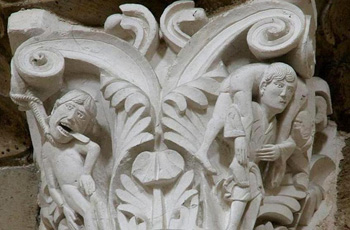“But, there’s one thing that makes me think that Judas’ story doesn’t end there … Perhaps someone might think, ‘this pope is a heretic…’ But, no! They should go see a particular medieval capital of a column in the Basilica of St. Mary Magdalen in Vézelay, Burgundy [in France],” he said. “On that capital, on one side there is Judas, hanged; but on the other is the Good Shepherd who is carrying him on his shoulders and is carrying him away.”
He revealed that he has a photograph of that two-part capital behind his desk, because it helps him meditate. “There is a smile on the lips of the Good Shepherd, which I wouldn’t say is ironic, but a little bit complicit,” he describes.

“There are many ways of reacting to shame; one is to despair, but we must try to help despairing people to find the true path of shame, so they don’t go down the path that put an end to Judas’ life … Shame is a grace,” the pope said.
(Ary Waldir Ramos Diaz, “Pope: What would have happened if Judas had met Our Lady on his way to kill himself?”, Aleteia, Nov. 24, 2017)

No comments:
Post a Comment